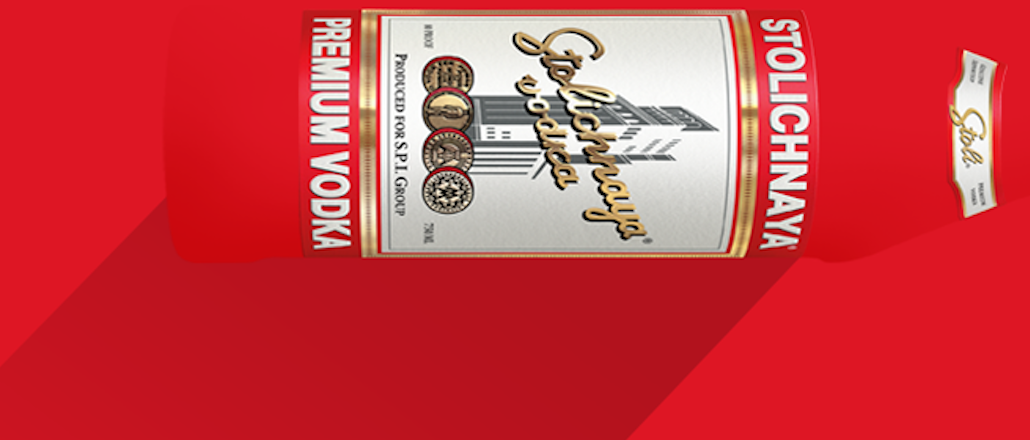
After breaking away from U.S. distributor William Grant & Sons  and setting out on its own in 2013, Stolichnaya vodka has reintroduced itself as “the” vodka and partnered with upscale lifestyle publications like Esquire and Playboy. “The Originals,” a set of Q&As and video profiles on influential people and businesses saw the brand team up with Mashable Brand Lab on sponsored content. Its own Tumblr page focuses on cocktail recipes and vivid images.
and setting out on its own in 2013, Stolichnaya vodka has reintroduced itself as “the” vodka and partnered with upscale lifestyle publications like Esquire and Playboy. “The Originals,” a set of Q&As and video profiles on influential people and businesses saw the brand team up with Mashable Brand Lab on sponsored content. Its own Tumblr page focuses on cocktail recipes and vivid images.
In advance of the Digiday Content Marketing Summit, held in Half Moon Bay, California, Aug. 3-5, we talked to Sarah Gorvitz, brand director of Stoli, who will speak at the event. The discussion covered how she defines content, the importance of partner platforms and the metrics of success. A lightly edited transcript below:
No one can seem to agree on a definition for content marketing. How does Stoli define it?
We consider content marketing long-form copy or specially created photographs or videos that are valuable and relevant to consumers and relevant to the brand — but content that doesn’t necessarily or immediately register as advertising.
How do you make advertising that doesn’t register as advertising?
Stoli is a lifestyle brand and consumers have given us permission to speak about the trappings of that lifestyle. Some of the things we create content about are sneakers, wardrobe choices, how to properly store cigars, a guide for hairstyle products — information that is perceived as valuable for our consumer targets.
How is it labeled, though, if it’s not meant to register as advertising?
We usually prefer to label content as “Sponsored by Stoli Vodka.”
Where does this information live?
Most of our content marketing is on our Tumblr page, but we also use partner platforms.
Why use partner platforms?
The Stoli community is pretty big, but I don’t think any brand today can achieve true scale (unless it’s Google) through its own community. Where you can achieve scale is by paying a partner. So I have very different metrics assigned to content on our Tumblr feed versus content that we’re publishing through a partner website.
What are those metrics?
We’re looking at impressions and clicks, and also time spent on the page. For video, we look at completion rates. On Playboy.com, we were a partner on the Playboy playbook. The metrics were really high: over 20 million impressions and 45,000 clicks over a three-month period. Our opt-in video was received in completion at more than 70 percent. It speaks to both the length of the video, a 15 -second spot, and consumer interest in the content itself. You have to find the right mix.
How do you decide on that mix? Do you have a video quota?
We don’t have a preconceived notion of the ratio between text and video, although maybe we should. When I can get video content, I definitely prefer it because it’s easier for us to publish across our channels. We see a much better engagement rate for video that we publish to Facebook, Twitter and Instagram. Stoli sees an equally high engagement rates on Facebook and Twitter. Measurement on Instagram is still nascent, but we use tools like Iconosquare to help.
What is the process of creating content like?
For our Tumblr page, we’ll hire a writer or photographer directly. With third-party destinations like Playboy or Mashable, we rely on them to get us excited about their ideas and their vision. Then we look at the costs associated and whether or not it’s the right fit for the brand. Once we pick our partner, we will review and approve all of the assets that eventually get published.
The Digiday Content Marketing Summit will feature speakers from brands like Marriott, JPMorgan Chase, Hasbro, Sonic and more. For more information, please visit the event site.
More in Marketing

With the rise of the chief AI officer, it’s time to examine ‘czar’ culture
Even if it’s a familiar pattern — hot new thing, new C-Suite exec to tackle said thing, a few years go by and that C-Suite position no longer exists as everyone is now doing said thing (or it was a fad that has since faded away) — does it make sense for businesses to continue to appoint new czars with every new trend?

Why Cava’s bid for brand awareness means prioritizing streaming ads
Fast-casual restaurant chain Cava has been in growth mode over the past year and is leaning into streaming ads in an effort to boost brand awareness.

A history of middle manager stress: The Return podcast, season 3, episode 1
In episode one, McKinsey partner Emily Field tells us more about why middle management is critically important to the workforce.





